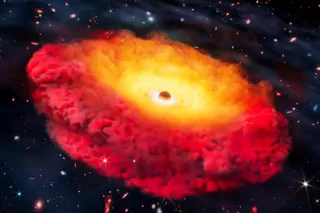Despite knowing dark matter is out there, astrophysicists are still missing one critical detail. “We know where it is and how much of it there is, but we don’t know what it is,” says Ben Safdi, an astrophysicist at the University of Michigan.
Some think this mysterious substance is made of hypothetical subatomic particles called sterile neutrinos. Unlike regular neutrinos, which interact via both gravity and the weak nuclear force, sterile neutrinos would only interact via gravity. And that seems to be the exact same rules of engagement that dark matter follows.
For this reason, astrophysicists since 2014 have sought the X-ray signals that would be produced if sterile neutrinos were decaying into normal matter as hypothesized. If such X-ray signatures were found, it would strongly suggest sterile neutrinos are a (if not the) elusive source of dark matter.
But after sifting through 20 years’ worth of data from the ...














